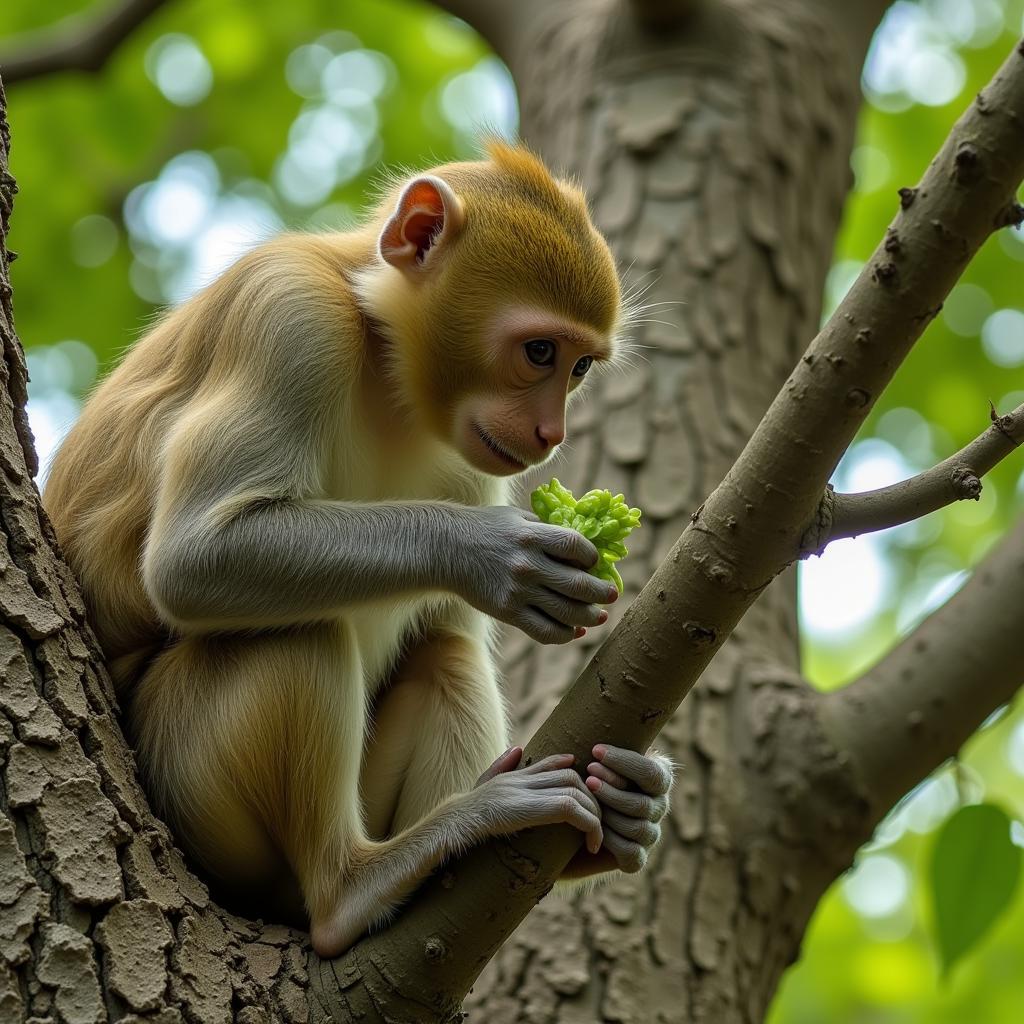The African green monkey, scientifically known as Chlorocebus sabaeus, is a common sight in many parts of sub-Saharan Africa. Their playful nature and vibrant green fur make them a captivating species to observe. While many are familiar with these monkeys in their younger years, this article delves deeper, exploring the characteristics and life experiences of the African green monkey in midlife, typically around the ages of 5-8 years old.
Navigating Midlife: A Shifting Social Landscape
Similar to humans, African green monkeys experience significant life changes as they transition into midlife. These changes are often reflected in their social dynamics and hierarchy within their troops.
A Test of Strength and Experience
 African Green Monkeys Interacting
African Green Monkeys Interacting
Midlife for male African green monkeys is frequently marked by challenges to their social standing. Younger, more agile males may attempt to usurp their positions within the troop hierarchy. This leads to displays of strength and dominance, with older males relying on their experience and strategic alliances to maintain their rank.
Female Bonds: The Power of Kinship
Female African green monkeys, on the other hand, often experience greater social stability in midlife. Their strong bonds with female relatives, particularly within their maternal line, provide them with a solid support system. These alliances are crucial for raising offspring, sharing resources, and navigating potential conflicts within the troop.
Dietary Adaptations: Seeking Sustenance in a Changing World
As African green monkeys age, their dietary needs and foraging behaviors may also undergo adjustments.
From Fruits to Foliage: Embracing a More Varied Diet
Younger monkeys often prioritize energy-rich fruits. However, as they mature, African green monkeys in midlife tend to incorporate a wider range of food sources into their diet. This includes leaves, seeds, flowers, and even insects, reflecting an adaptation to the changing availability of resources and their evolving nutritional requirements.
Mastering New Foraging Techniques
 African Green Monkey Foraging for Food
African Green Monkey Foraging for Food
This shift in diet often necessitates learning new foraging techniques. Older monkeys may need to develop strategies for accessing harder-to-reach foods or for efficiently extracting nutrients from less-preferred sources. This adaptability is key to their survival, especially in environments where resources may be limited or subject to seasonal variation.
Legacy and Leadership: Guiding the Next Generation
Despite the challenges of midlife, African green monkeys play a crucial role in their troops as experienced individuals.
Passing on Vital Knowledge
Older monkeys serve as repositories of knowledge, passing down crucial survival skills to younger generations. This includes everything from identifying food sources and recognizing predators to navigating their complex social structures and learning effective communication signals.
Shaping Troop Dynamics: A Balancing Act
Their experience also allows them to act as mediators within the troop, helping to diffuse tension and maintain social harmony. By demonstrating conflict resolution strategies and setting examples for appropriate behavior, they contribute to the stability and well-being of the entire group.
The African Green Monkey: A Testament to Resilience
The African green monkey, even in midlife, embodies resilience and adaptability. By navigating social shifts, adjusting their foraging strategies, and passing on valuable knowledge, they demonstrate the enduring spirit of this fascinating primate. Understanding their midlife journey offers a glimpse into the intricate lives of these creatures and highlights the complex interplay of social dynamics, ecological pressures, and individual resilience within primate societies.
Leave a Reply